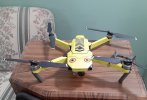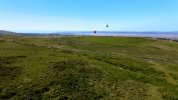French translation- I just received a very long French posting. Although I had 4 years of French, I could not make most of this out. So I copied and pasted it into Google Translate and got the following;
I almost lost my
MA2 yesterday to a bird! It’s certainly not the first time I’ve encountered a bird, but it certainly is the scariest one! I usually fly up to 100m right after take off to avoid any birds flying in the Dallas area. My protocol when I meet a bird is to switch from the plane to sport mode and push the throttle all the way. It usually helps me gain altitude, after which I fly away from the bird. Most of the time, curious birds just fly close to the drone and don't really bother it. Yesterday, however, this bird viciously surrounded my drone. When I say circled, it was like a meter from the drone. It started when I was 75m in the air and no attempt to take off would have worked since I was afraid of crashing it into buildings / cars / people. My only option was to lower the altitude (since the drone's then current position was over grassy land), which I did and this bird circled my drone down to 5m from the ground! I think it was a predatory bird because it rarely hit its wings after it took to the skies (it wasn't tall either). This incident has me thinking of the worst - what if the mavic is indeed attacked by her? I'm assuming the bird will sustain propeller injuries, but that impact should also reduce the rpm of the engine hit by the bird, causing the Mavic to tip to one side. Would the Mavic come down to the ground because of the tilt (usually tilting the mavic stops it, doesn't it?) Or would the engine rev up and stabilize the plane? at a point below the original altitude? If anything chose, I think the folding props would help the drone in this case because the pro would simply bend upon impact, killing the stress flow at the pivot point rather than passing it all the way. in the center of the prop, as it would in the case of an prop Can someone who has encountered a similar situation share how isn't a face made? And does anyone have a comment on the protocol I followed (lowering it) when this bird started circling my dron?













